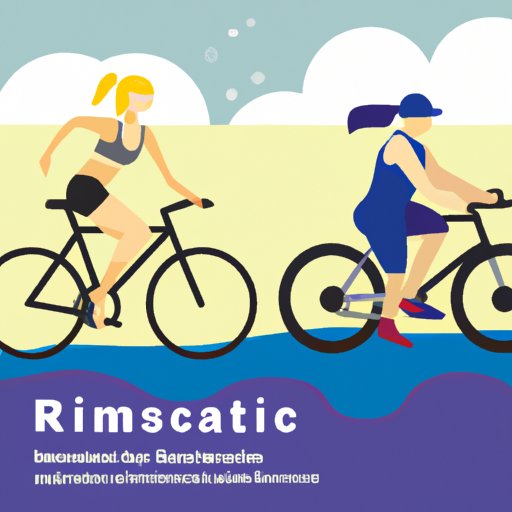Introduction
Aerobic exercise, also known as cardio, is a form of physical activity that increases the heart rate and breathing rate for an extended period of time. This type of exercise is beneficial for both physical and mental health, and can help with weight loss goals. In this article, we will explore the different types of aerobic exercise, their benefits, and how to get started with an aerobic exercise program.
Types of Aerobic Exercise
There are many different types of aerobic exercise, ranging from low-impact activities like walking to more intense activities like running or cycling. Some of the most popular forms of aerobic exercise include:
Running
Running is one of the most popular forms of aerobic exercise. It’s relatively inexpensive, requires minimal equipment, and can be done almost anywhere. Running has many physical and mental health benefits, such as improved cardiovascular health, increased endurance, and reduced stress levels.
Cycling
Cycling is another great form of aerobic exercise, and it can be done indoors or outdoors. It’s a low-impact activity that’s easy on the joints, and it’s also a fun way to explore the outdoors. Cycling can improve muscle strength, cardiovascular fitness, and coordination.
Swimming
Swimming is an excellent form of aerobic exercise that provides a full-body workout. It’s a low-impact activity that’s easy on the joints, and it can help improve cardiovascular fitness, muscle strength, and flexibility. Swimming can also be a relaxing and enjoyable activity.
Other Forms of Aerobic Exercise
In addition to the above activities, there are many other forms of aerobic exercise, such as dancing, hiking, rowing, and jumping rope. No matter what type of aerobic exercise you choose, it’s important to find something that you enjoy and that fits into your lifestyle.

Aerobic Exercise for Weight Loss
Aerobic exercise can be an effective tool for weight loss. According to a study published in the International Journal of Obesity, “Aerobic exercise is an effective strategy to reduce body fat in overweight and obese adults.” The study found that aerobic exercise combined with a healthy diet was more effective than diet alone for reducing body fat.
The key to successful weight loss is creating a plan that incorporates both diet and exercise. Incorporating aerobic exercise into your routine can help burn calories, increase energy levels, and make it easier to stick to a healthy diet. It’s important to remember that weight loss is not a quick process, and it’s important to set realistic goals and focus on making small changes over time.

Getting Started with Aerobic Exercise
If you’re new to exercise, it can be intimidating to get started. Here are some tips to help you get started on the right foot:
- Start slow. If you’re a beginner, start with low-intensity aerobic exercises like walking or swimming at a comfortable pace.
- Set achievable goals. Don’t try to do too much too soon. Start with small goals and gradually increase your intensity and duration over time.
- Make it fun. Choose activities that you enjoy and that fit into your lifestyle. Try different activities to find something that works for you.
- Stay motivated. Create a routine and set aside time for exercise. Reward yourself for reaching your goals, and don’t give up if you have setbacks.
The Science Behind Aerobic Exercise
There is a growing body of scientific evidence that supports the effectiveness of aerobic exercise for improving physical and mental health. A systematic review published in the Journal of Sport and Health Science found that aerobic exercise was associated with improvements in physical health, cognitive function, and quality of life.
Another study published in the journal Frontiers in Psychology found that aerobic exercise can reduce symptoms of depression, anxiety, and stress. The researchers concluded that “aerobic exercise may be considered as an effective treatment option for individuals suffering from mental health problems.”
Conclusion
Aerobic exercise is an effective way to improve physical and mental health. It can help with weight loss goals, increase energy levels, and reduce stress levels. There are many different types of aerobic exercise, from low-impact activities like walking to more intense activities like running or cycling. No matter what type of aerobic exercise you choose, it’s important to find something that you enjoy and that fits into your lifestyle.
If you’re just getting started with aerobic exercise, start slow and set achievable goals. Stay motivated by creating a routine and rewarding yourself for reaching your goals. With dedication and consistency, you’ll soon see the physical and mental health benefits of aerobic exercise.
(Note: Is this article not meeting your expectations? Do you have knowledge or insights to share? Unlock new opportunities and expand your reach by joining our authors team. Click Registration to join us and share your expertise with our readers.)
